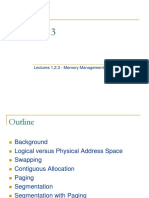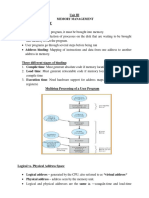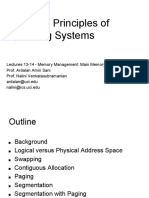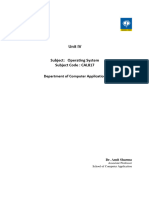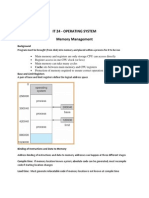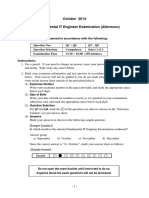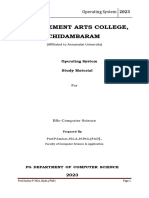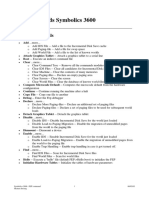0% found this document useful (0 votes)
122 views13 pagesMemory Management
The document discusses memory management techniques used by operating systems. It describes how processes move between job queues, ready queues, and memory. It also explains three stages of binding instructions and data to memory addresses: compile-time, load-time, and execution-time. The document then discusses physical versus logical addresses, how MMUs map virtual to physical addresses, and memory allocation strategies like first-fit and best-fit. It concludes by covering paging, fragmentation, page tables, and memory protection techniques.
Uploaded by
Rowid Sami RulesCopyright
© © All Rights Reserved
We take content rights seriously. If you suspect this is your content, claim it here.
Available Formats
Download as DOCX, PDF, TXT or read online on Scribd
0% found this document useful (0 votes)
122 views13 pagesMemory Management
The document discusses memory management techniques used by operating systems. It describes how processes move between job queues, ready queues, and memory. It also explains three stages of binding instructions and data to memory addresses: compile-time, load-time, and execution-time. The document then discusses physical versus logical addresses, how MMUs map virtual to physical addresses, and memory allocation strategies like first-fit and best-fit. It concludes by covering paging, fragmentation, page tables, and memory protection techniques.
Uploaded by
Rowid Sami RulesCopyright
© © All Rights Reserved
We take content rights seriously. If you suspect this is your content, claim it here.
Available Formats
Download as DOCX, PDF, TXT or read online on Scribd
/ 13


